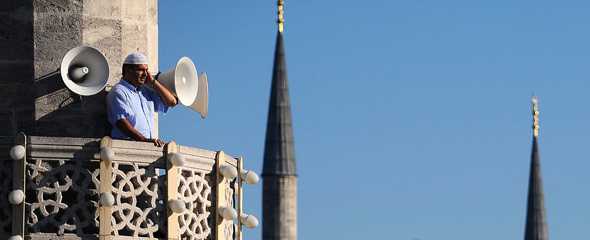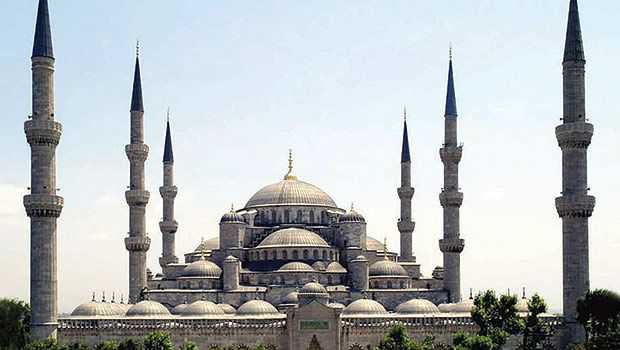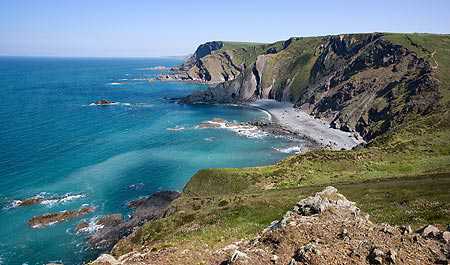After successfully running its Buddhist immersion program Monk for a Month, the Blood Foundation looked to easing the “social friction between Muslims and non-Muslims” earlier this year. So was born the sister program – Muslim for a Month.

Split into a 9 day and more comprehensive 21 day course, Muslim for a Month was created to allow a deeper understanding of Muslim creed, action and green lifestyle, particularly in a tourist hotspot where travellers bypass the day-to-day routine of Muslims.
Both courses were launched as a broad introduction to Islam and the environmentally aware Rumi inspired Sufism branch of spirituality. Moreover, members have been educated in healthier eating, the Muslim wedding ceremony and participated in a day of fasting.
I asked Ben Bowler, a Muslim for a Month co-ordinator, why the program was launched in Turkey, why Islam, and why now?
Muslim for a Month: “We were led to Turkey by a series of synchronous events. It seems to be a good access point for non-Muslims to encounter Islam.
Islam being the second biggest religion in the world has a great impact on the planet. We were attracted to build a program that would contribute to more harmonious relationships between people of different faiths and worldviews.
Now is great timing as there are many people who are seeking more fruitful relationships between various religions and worldviews after what has been a difficult decade. We hope we can be a part of a thawing spring of peace and progress.”
According to the organisation, Blood Foundation has a number of education projects and cultural exchange programs, particularly in the field of Human Rights in relation to the ongoing civil war in Burma. You can learn more as well as make a donation by going to www.fangvalley.com.
Green Prophet: What response have you had to your cultural exchange program from the Muslim, Turkish and wider community?
Muslim for a Month: “So far the experience has been overwhelmingly positive. The local Turkish media as well as the wider Islamic media have been both curious and supportive. People seem to think it is a good idea and that now is the right time.”
Browsing through their website, one of programs called The Ruminations covers a more spiritual itinerary as well as practical areas of the Muslim lifestyle. There is an opportunity to visit mosques, take a boat ride, and a shopping trip to Istanbul‘s Grand Bazaar (material relief perhaps?). Participants can also join in communal prayers, experience the movements of Whirling Dervishes and hear Qur’an recitations in Arabic.
With the arrival of Ramadan this August – the Islamic month of abstinence – Muslim for a Month provided a day of fasting, enabling participants to truly immerse themselves in living as a Muslim. Food and entertainment was approved by halal authorities, of course.
Green Prophet: Do you feel your program has impacted how people affect their environment and health?
Muslim for a Month: “Certainly in the fields of health, folks who are learning the teachings of Rumi, say on self mastery, can learn to live healthy lives by eating more consciously and in moderation.”
Hear what participants said about the Muslim For A Month project on YouTube.
Green Prophet: Do you feel protecting the Earth’s health and understanding how others live is a global duty?
Muslim for a Month: “Yes indeed, people have a great role to play in protecting the earth’s health and we all need to be more open to how people from other cultures and worldviews live their lives. We must be good stewards of the planet. Theistic faith can make a great contribution in providing people with the inspiration to live up to such ideals.
Blood Foundation (www.bloodfoundation.org) is in the process of researching a Christian for a Month program in Scotland or Ireland as well as a Monotheism based program sometime in Jerusalem. We are also adding Sufi for a Month in Turkey for visitors who may be looking for an experience that is more spiritual than religious.”
Green Prophet: Please share with us some of the core green principles inspired by Islam and Rumi, the Sufi mystic, that you know of.
Muslim for a Month: “I refer to the principle of stewardship above – we must learn to be brothers and sisters to all people. Also we must love the creation for the sake of the Creator, so we take care of the whole planet, the animals, plants and each other.”
Green Prophet: As a final message, if you could get people of a religious background to do just one thing for the environment, what would it be?
Muslim for a Month: “If I could get religious people to do just one thing for the environment, it would be to treat the whole world as a precious masterpiece of divine creation.”
With that beautiful image, we thank Ben and remind you of Muslim for a Month’s booking for 2012 which is now open.
Image: Muslim For A Month © (flickr)
via “Muslim For A Month” Project In Turkey Grows Interfaith Seeds | Green Prophet.





